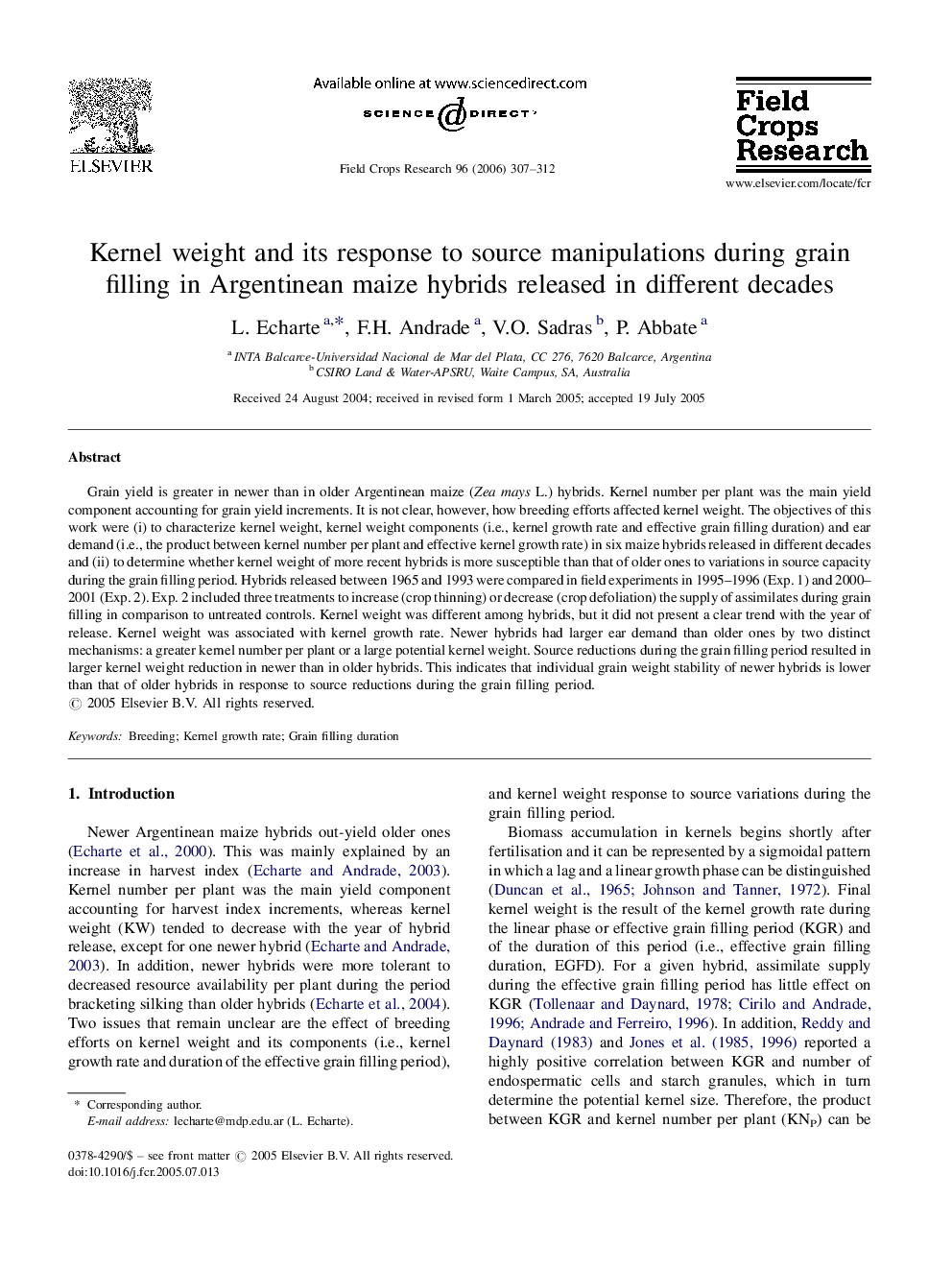| Article ID | Journal | Published Year | Pages | File Type |
|---|---|---|---|---|
| 4511822 | Field Crops Research | 2006 | 6 Pages |
Grain yield is greater in newer than in older Argentinean maize (Zea mays L.) hybrids. Kernel number per plant was the main yield component accounting for grain yield increments. It is not clear, however, how breeding efforts affected kernel weight. The objectives of this work were (i) to characterize kernel weight, kernel weight components (i.e., kernel growth rate and effective grain filling duration) and ear demand (i.e., the product between kernel number per plant and effective kernel growth rate) in six maize hybrids released in different decades and (ii) to determine whether kernel weight of more recent hybrids is more susceptible than that of older ones to variations in source capacity during the grain filling period. Hybrids released between 1965 and 1993 were compared in field experiments in 1995–1996 (Exp. 1) and 2000–2001 (Exp. 2). Exp. 2 included three treatments to increase (crop thinning) or decrease (crop defoliation) the supply of assimilates during grain filling in comparison to untreated controls. Kernel weight was different among hybrids, but it did not present a clear trend with the year of release. Kernel weight was associated with kernel growth rate. Newer hybrids had larger ear demand than older ones by two distinct mechanisms: a greater kernel number per plant or a large potential kernel weight. Source reductions during the grain filling period resulted in larger kernel weight reduction in newer than in older hybrids. This indicates that individual grain weight stability of newer hybrids is lower than that of older hybrids in response to source reductions during the grain filling period.
